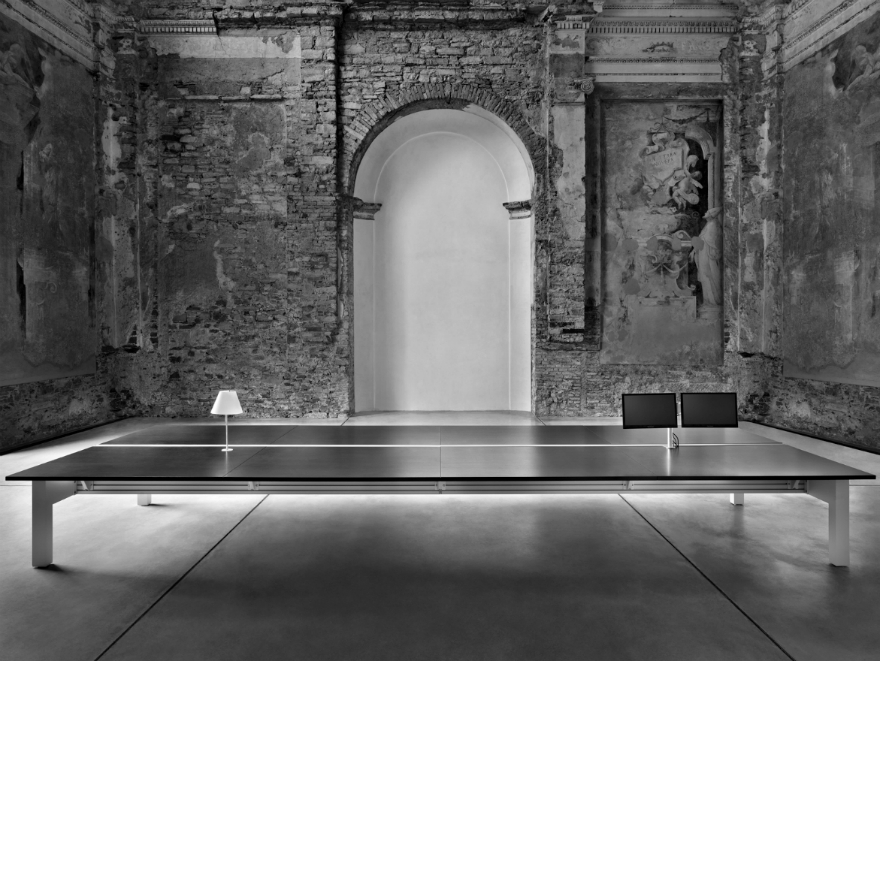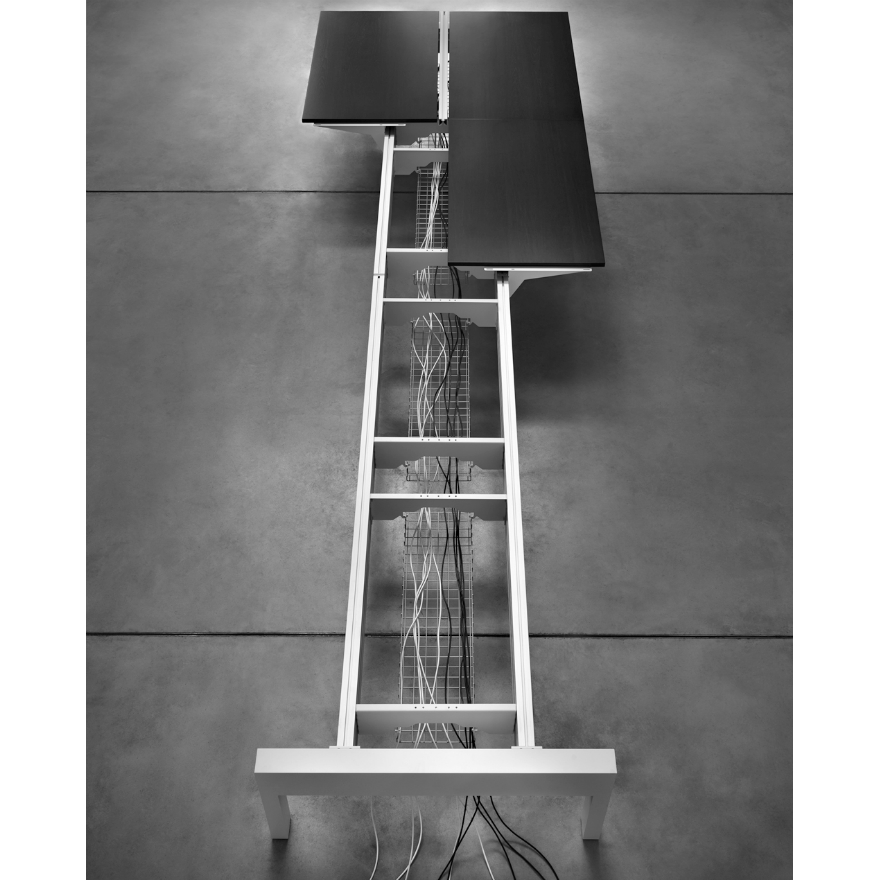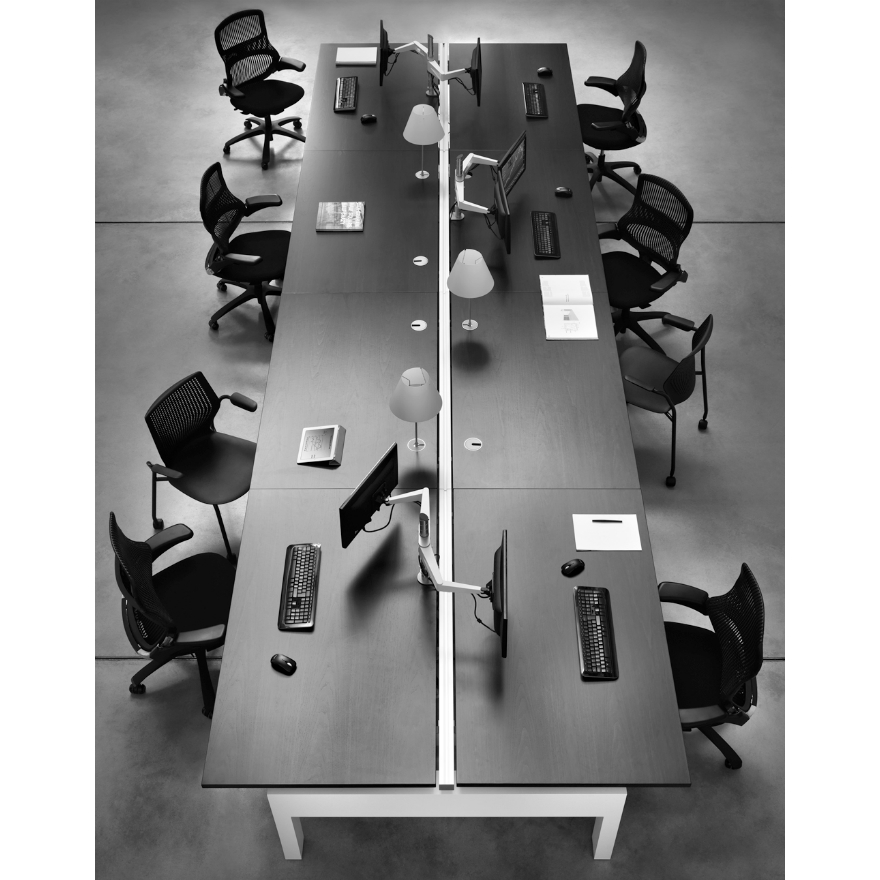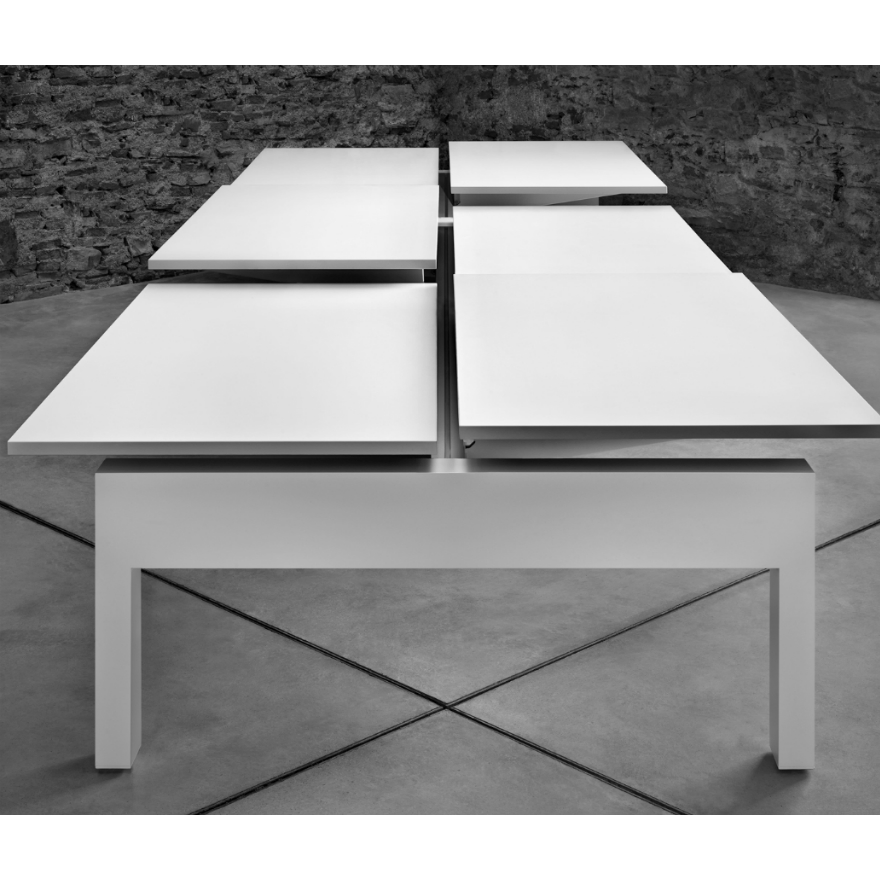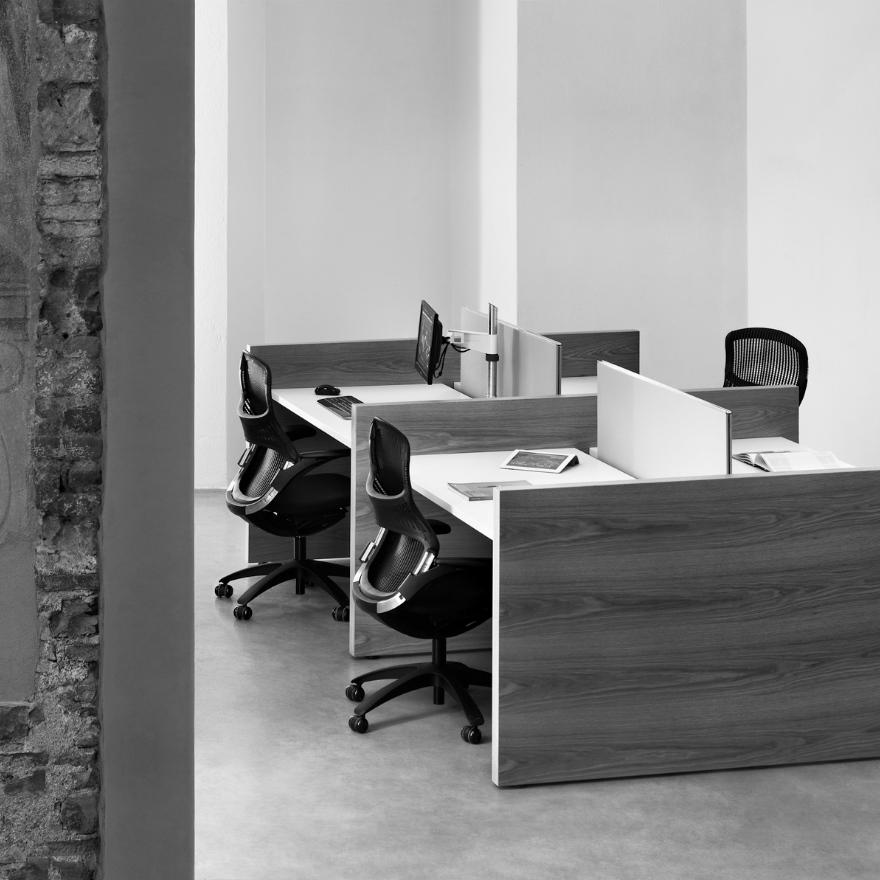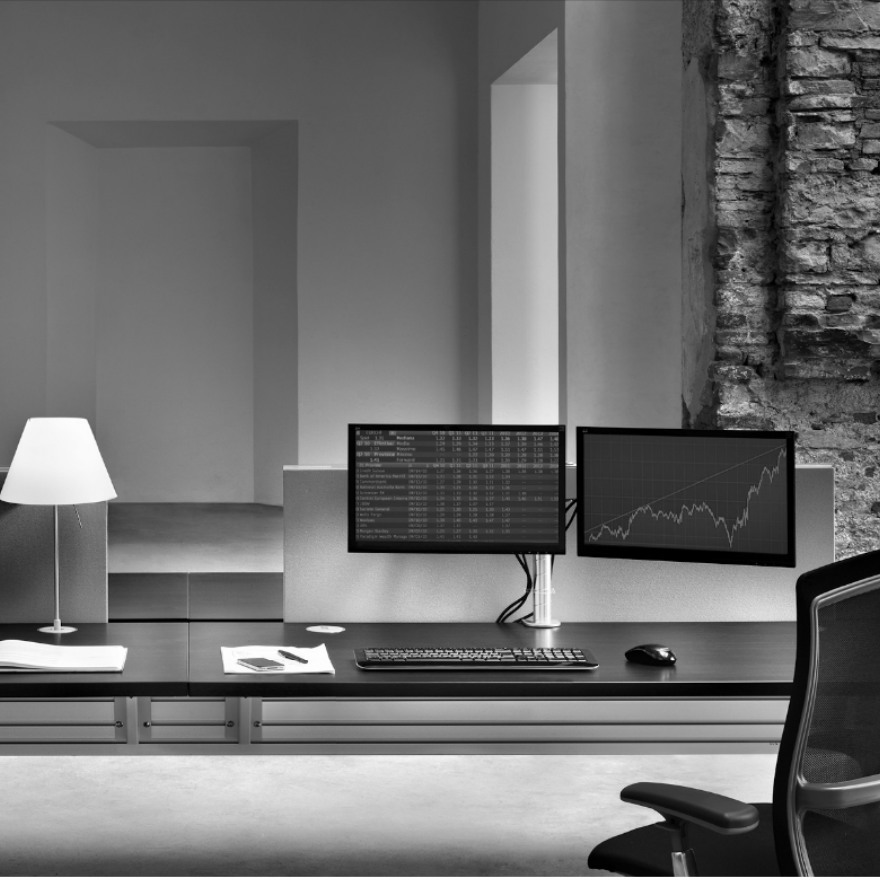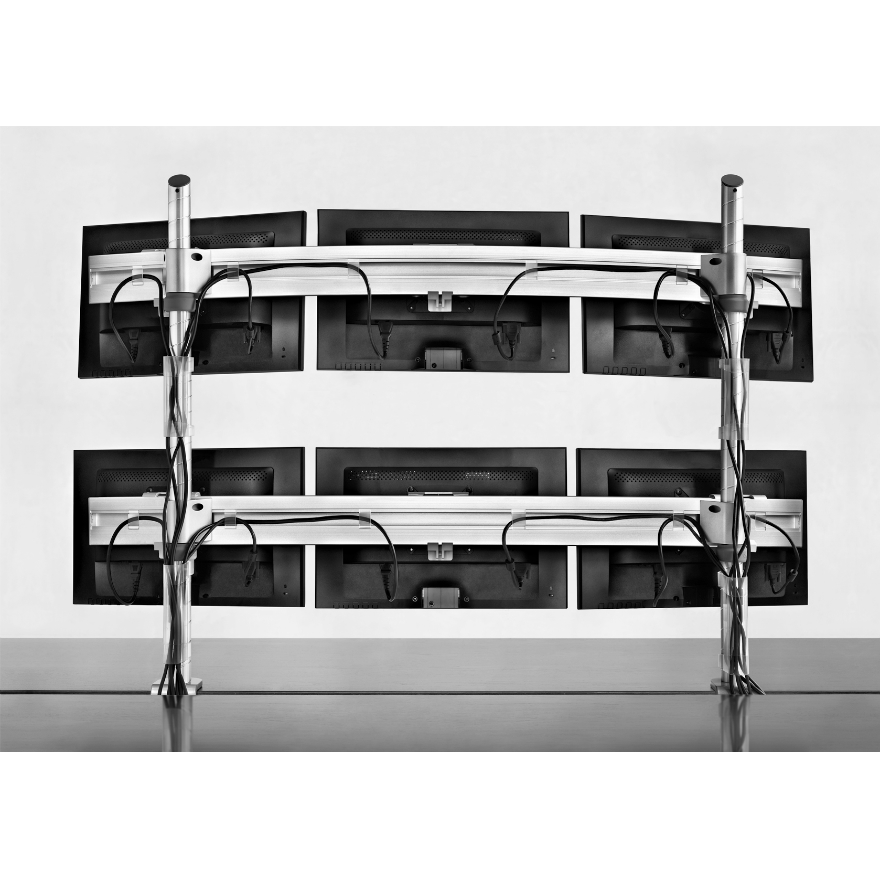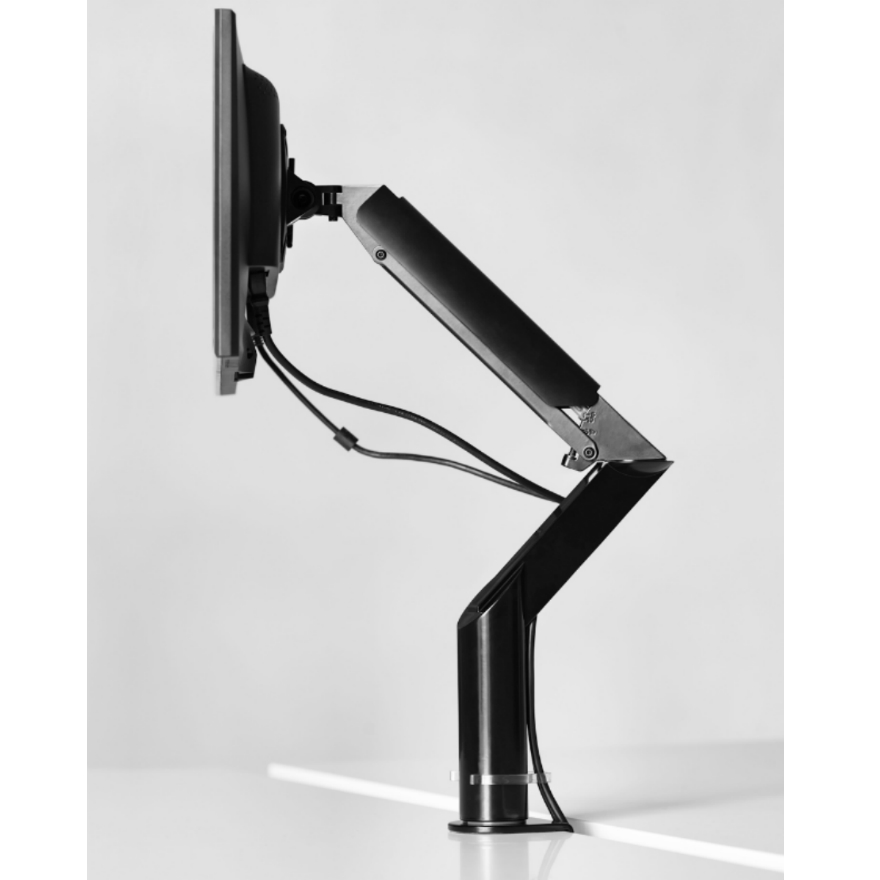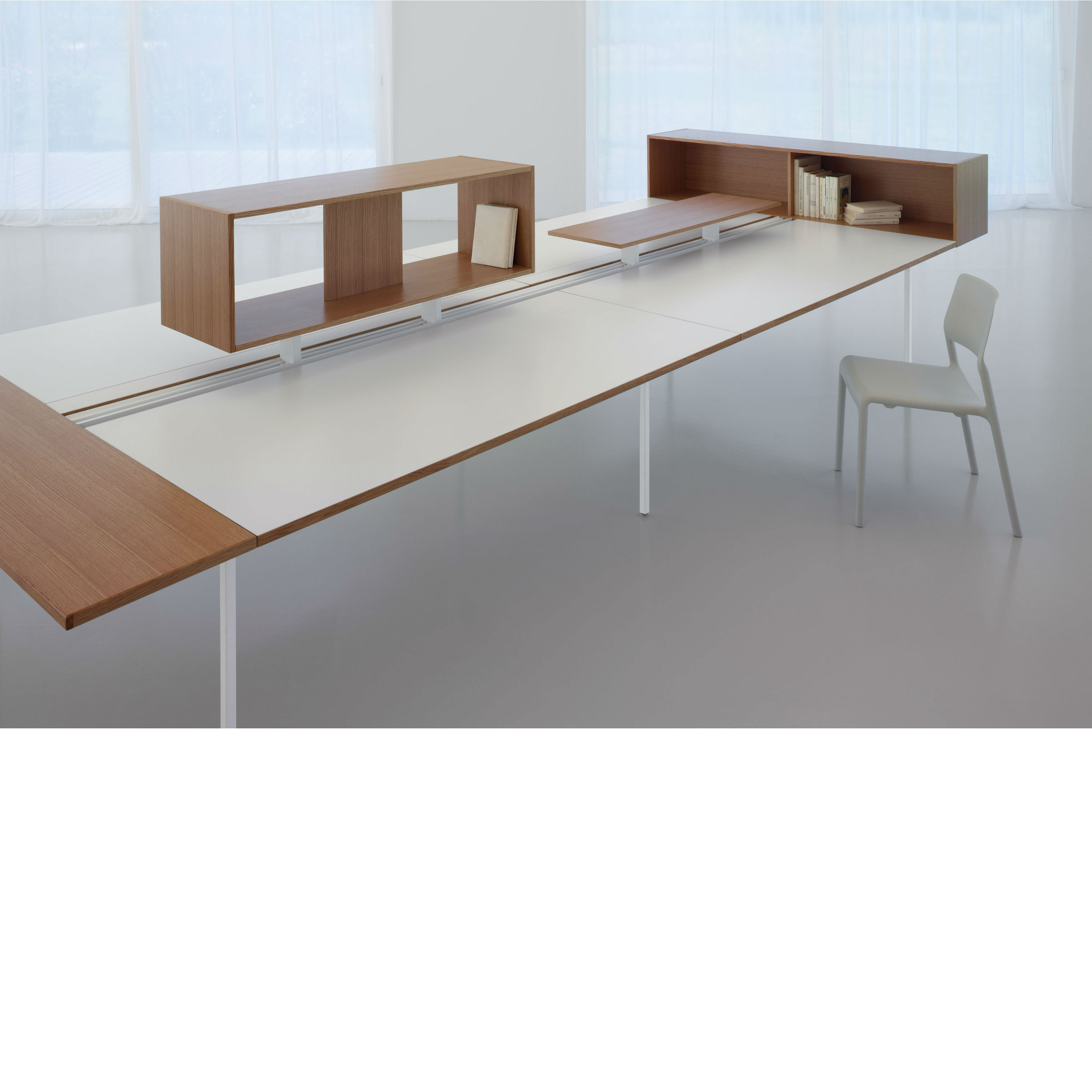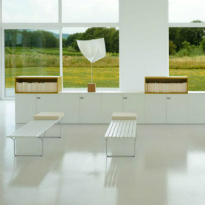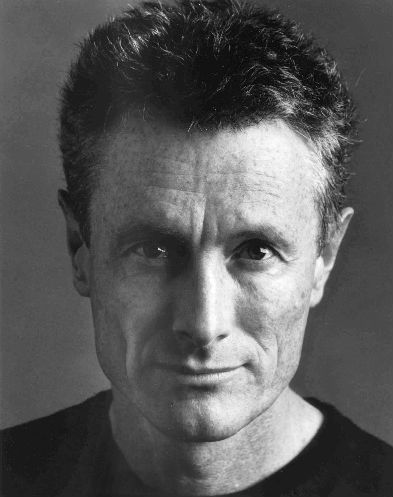Construction
Worksurfaces: Veneer, HPL or Melamine faced board; Structure: Box section aluminium; steel plate; folded steel.
Finishes
Worksurfaces: 5 Plateau core colours: White, Light grey, Maple, Beech & Pear. 2 Plateau wood veneers: Maple & American black walnut. Structure (excl. beams): 4 Plateau core colours: Dark grey, Bright white, Graphite & Sliver. Beams: Silver.
Performance
Plateau becomes part of the infrastructure. Assemble it and forget it. The capacity for cabling is enormous. Wiring can be loaded prior to the worksurfaces being fitted, but remains accessible.
The Plateau infrastructure remains fixed while the work place remains endlessly flexible. Working positions are not defined by intermediate legs. People move, teams form and disperse without the need to reconfigure furniture. Zero churn. Density and work place dimensions become variable. Plateau worksurfaces may be fixed or individually height adjustable. Personal spaces can be customised with lamps, dividing screens and desk accessories. The details are beautiful with rich veneers and solid aluminium grommets.
